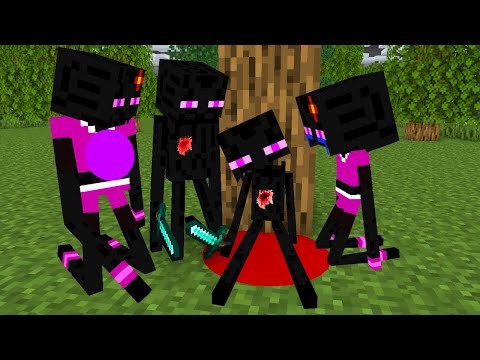
Minecraft is a sandbox video game developed by Mojang Studios. The game was created by Markus “Notch” Persson in the Java programming language. Following several early test versions, it was released as a paid public alpha for personal computers in 2009 before officially releasing in November 2011, with Jens Bergensten taking over development. Minecraft has since been ported to several other platforms and is the best-selling video game of all time, with 200 million copies sold and 126 million monthly active users as of 2020.
In Minecraft, players explore a blocky, procedurally-generated 3D world with infinite terrain, and may discover and extract raw materials, craft tools and items, and build structures or earthworks. Depending on game mode, players can fight computer-controlled “mobs”, as well as cooperate with or compete against other players in the same world. Game modes include a survival mode, in which players must acquire resources to build the world and maintain health, and a creative mode, where players have unlimited resources. Players can modify the game to create new gameplay mechanics, items, and assets.
Minecraft has been critically acclaimed, winning several awards and being cited as one of the greatest video games of all time. Social media, parodies, adaptations, merchandise, and the annual MineCon conventions played large roles in popularizing the game. It has also been used in educational environments, especially in the realm of computing systems, as virtual computers and hardware devices have been built in it. In 2014, Mojang and the Minecraft intellectual property were purchased by Microsoft for US$2.5 billion. A number of spin-off games have also been produced, such as Minecraft: Story Mode, Minecraft Dungeons, and Minecraft Earth.
Minecraft is a 3D sandbox game that has no specific goals to accomplish, allowing players a large amount of freedom in choosing how to play the game However, there is an achievement system known as “advancements” in the Java Edition of the game. Gameplay is in the first-person perspective by default, but players have the option for third-person perspective The game world is composed of rough 3D objects—mainly cubes and fluids, and commonly called “blocks”—representing various materials, such as dirt, stone, ores, tree trunks, water, and lava. The core gameplay revolves around picking up and placing these objects. These blocks are arranged in a 3D grid, while players can move freely around the world. Players can “mine” blocks and then place them elsewhere, enabling them to build things Many commentators have described the game’s physics system as unrealistic liquids continuously flow for a limited horizontal distance from source blocks, which can be removed by placing a solid block in its place or by scooping it into a bucket. The game also contains a material known as redstone, which can be used to make primitive mechanical devices, electrical circuits, and logic gates, allowing for the construction of many complex systems.
The default player skin, Steve, stands on a cliffside overlooking a village in a forest. In the distance, there is a small mountain range. The sun is setting to the right, making the sky turn pink and blue.
An example of Minecraft’s procedurally-generated terrain, including a village and the default skin Steve
The game world is virtually infinite and procedurally generated as players explore it, using a map seed that is obtained from the system clock at the time of world creation (or manually specified by the player) There are limits on vertical movement, but Minecraft allows an infinitely large game world to be generated on the horizontal plane. Due to technical problems when extremely distant locations are reached, however, there is a barrier preventing players from traversing to locations beyond 30,000,000 blocks from the center. The game achieves this by splitting the world data into smaller sections called “chunks” that are only created or loaded when players are nearby.The world is divided into biomes ranging from deserts to jungles to snowfields; the terrain includes plains, mountains, forests, caves, and various lava/water bodies. The in-game time system follows a day and night cycle, and one full cycle lasts 20 real-time minutes.